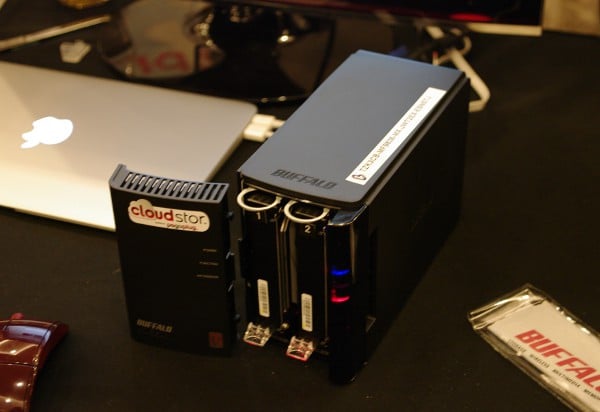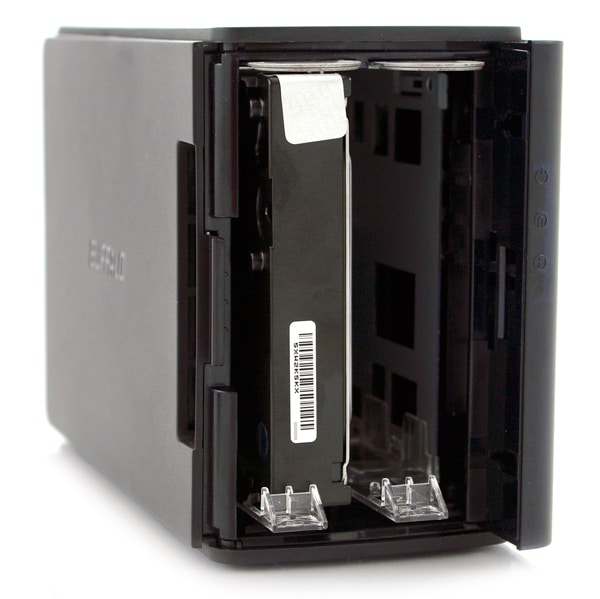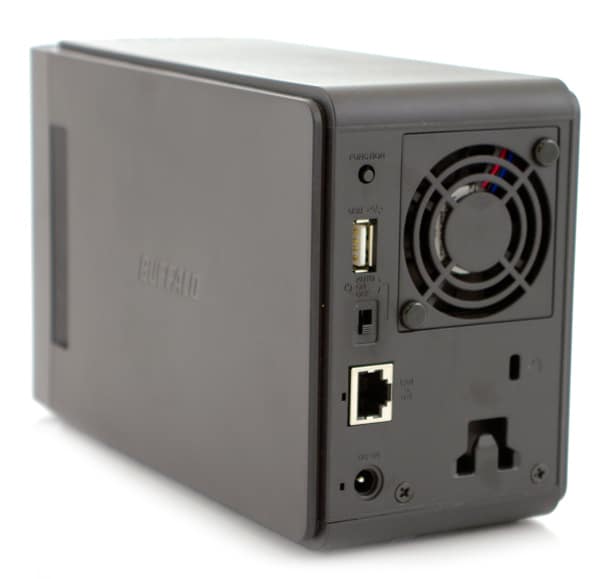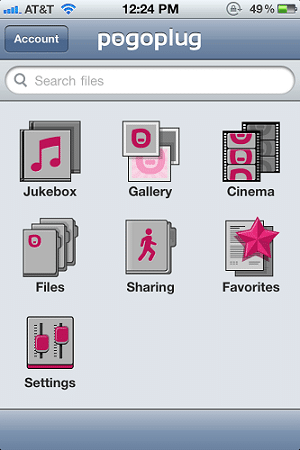Personal Cloud – that’s going to be an increasingly popular storage motif over the coming years as consumers figure out exactly how to manage their increasingly large and complex libraries of digital media files. Buffalo’s take on the personal cloud space is the CloudStor, a two-bay NAS that’s equally accessible within the home network or on the road via applications on mobile devices.
Buffalo has a lot right in their approach with the CloudStor. Consumers want devices that are easy to configure and manage, that’s a key point of home storage products. The CloudStor is essentially taken out of the box, plugged in and configured through a web interface. From there the storage volume is pretty much immediately available to all networked devices and over the Internet via mobile apps. Part of the ease of use is thanks to the integration with PogoPlug, who provides the software backbone to make the cloud functions and mobile apps work.
Another key factor is price – the single disk 1TB CloudStor has a street price of around $130. The single-disk 2TB version is $180 or $230 with the newer 1.6Ghz processor. While we’d certainly recommend a two-disk RAID1 setup for those wanting redundancy, Buffalo’s low cost of entry on the single disk model makes the CloudStor appealing for those looking to get their feet wet with more robust home storage solutions.

Buffalo CoudStor Specs
- One drive included, two drive bays
- Drive Interface SATA 3 Gb/s
- Hard Drive Sizes 1.0 TB (CS-WX1.0/1D)
- 2.0 TB (CS-WX2.0/1D & CS-WV2.0/1D)
- Supported RAID levels 1, JBOD (individual disks)
- Ethernet port
- USB 2.0 port
- File Sharing CIFS/SMB, AFP, HTTP/HTTPS
- Management HTTP
- Time Synchronization NTP
- Dimensions (WxHxD in.) 8.1x 5.1 x 3.4
- Weight (lbs) Average 5.1
- Power Consumption (Watts) Average 26 W, Maximum 48 W, 0.7 W Standby
Design and Build
The Buffalo CloudStor has a rather unassuming design which is easy to hide away on a shelf and forgot about it once you get it up and running. The look puts function over form, with an easy to remove front panel for hard drive access, and uncluttered feel that gives vital information without any fluff.

After removing the front cover, both hard drives are easy to swap out if the need should arise. The drives are held in with a plastic retention clip and with a small tug from the bar on top slide out with ease. Stock configuration the CloudStor comes with a single drive, with the extra bay configurable as either RAID1 for some data protection or a spanned setup to increase available capacity.

The rear of the Buffalo CloudStor shows off the small cooling fan, USB 2.0 port for an external hard drive, power switch, power connection, and Ethernet connection. The power switch has three settings; auto, on, and off. We decided to leave the device in “on” during our testing to prevent it from shutting down to save power.
In Use
Setting up a storage device might be intimidating for someone with little or no experience. Buffalo has tried to mitigate any concerns with online documentation that’s thorough – from a setup guide to support videos. Buffalo claims setup can be done in 60 seconds, which isn’t too far away from the truth. After model plugged in and on our internet-accessible network, the CloudStor was visible through the online interface after entering in the device ID listed with our system. Once pair with your newly created account you can access the NAS wherever you are located, be it sitting next to the unit in your office or halfway around the world.

One of the big draws to the CloudStor interface is being able to remotely manage downloads no matter where you are presently located and have files ready for use when you return to the system. Buffalo includes a BitTorrent client for torrent downloads, which worked great in our testing. The client was quick to saturate our 10/1.5 business-class cable connection, topping out at roughly 1.1MB/s.

You can also access the CloudStor remotely from desktop and mobile apps. We included screenshots from the PogoPlug iPhone and iPad client for reference. The interface was very usable and you could access media very well remotely. Depending on your mobile device’s connection speed your experience may vary.



You can also use the CloudStor to backup files from local media via the USB 2.0 port on the back. When you insert a device into the rear USB port the function LED lights up, and when you press the function button during the first three seconds it dumps all of the files into a ‘directcopy’ folder.
Performance
Transfer speeds to and from the Buffalo CloudStor were very reasonable in our local network. With a local share mapped to the NAS, we were able to measure speeds up to 42.6MB/s read and 50.2MB/s write using CrystalDiskMark. Using the latest software from Buffalo, we had no trouble working with files larger than 4.5GB.
Power
Operating on an embedded platform the CloudStor uses power very efficiently, drawing just 13 watts at idle. Startup power peaked at 25 watts during the spin-up of the hard drive with the peak active power rate only rising to 14 watts when the device was being written to over the network.
Conclusion
The Buffalo CloudStor does what it’s intended to do and does it well. Buffalo delivers an easy to set up home storage system that helps families or small businesses free their media files. Perhaps the best thing about the CloudStor is the second bay, giving users redundancy via RAID 1 if they choose to add a second hard drive. For whatever reason Buffalo only sells the CloudStor in a single-drive configuration, but adding a second is as easy as slapping it in the unit and working through the settings.
In terms of functionality the CloudStor does what consumers want, delivering their media files to multiple types of devices, ranging from smartphones and tablets to computers and TV screens. For the more technically inclined, the Torrent server is a nice touch, and will appeal to a large base of media consumers. The PogoPlug integration works very well for mobile access, putting all your files at your mobile fingertips, no matter what the network firewall situation might be. Overall for someone that might not be as experienced when it comes to building a home storage solution, Buffalo created a very easy to use platform to access and store media from anywhere.
Pros
- Easy setup and configuration
- Aggressive pricing
Cons
- No 2-drive models
Bottom Line
The Buffalo CloudStor is a great home storage solution for someone with a lot of media they want to share between home and mobile devices and might not want to deal with a complicated network setup process.




 Amazon
Amazon